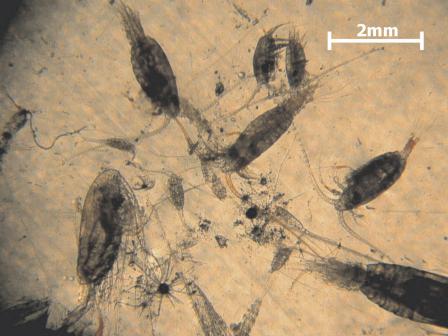Indicators: Zooplankton
What are zooplankton?
Zooplankton are small, free-floating aquatic microorganisms including crustaceans, rotifers, open water insect larvae and aquatic mites. The zooplankton community is composed of both primary consumers, which eat free-floating algae, and secondary consumers, which feed on other zooplankton.

Why is it important to evaluate zooplankton?
The zooplankton community is an important element of the aquatic food chain. These organisms serve as an intermediary species in the food chain, transferring energy from planktonic algae (primary producers) to the larger invertebrate predators and fish who in turn feed on them. Zooplankton are highly sensitive to changes in aquatic ecosystems. The effects of environmental disturbances can be detected through changes in species composition, abundance and body size distribution.
What can zooplankton tell us about the condition of water?
Information on the kinds of zooplankton that are found in the water, and the abundance of certain species relative to one another, serves as a measure of biological condition. Zooplankton are good indicators of change in nutrient pollution over time because they respond quickly to changes in nutrient input to the waterbody.
